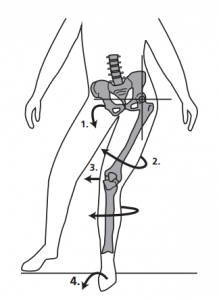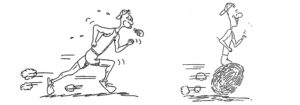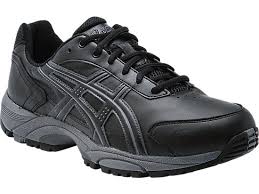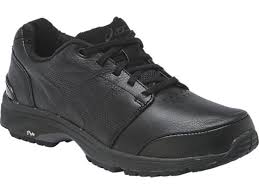1. Review of research: Stride frequency changes do not influence running economy in minimalist footwear or conventional running shoes. (Warne et al., 2016)
Why we like it: club level runners (experienced runners running 52 ± 11km/week) were used as the test subjects and given 6 weeks to become accustomed to the minimalist footwear before testing was undertaken. Testing was conducted at both a self-selected and controlled stride frequency, in both minimalist and conventional running shoes.
Take home message: numerous previous research has shown that stride frequency changes in response to wearing minimalist footwear, thereby potentially influencing running economy. However…this study seems to be rocking the boat a little reporting no change in stride frequency! Therefore, this study would suggest wearing whichever runners you find the most comfortable and that other measures need to be undertaken in order to change your running economy…
2. New Research: Unloading shoes for self-management of knee osteoarthritis: a randomized trial. (Hinman et al., 2016)
Why we like it: who doesn’t like a double blinded randomised control trial?!…and the more we find ways to manage chronic conditions the better! This study looked at 164 participants (50 years plus) with medial knee (tibiofemoral) osteoarthritis and compared the Asics GEL-Melbourne OA shoe (figure 1) to the Asics GEL-Odyssey (figure 2). For those of you who are not 100% up to date with your footwear knowledge, the Asics GEL-Melbourne OA has a triple density midsole that is stiffer laterally (most commercially available shoes are stiffer medially). The researchers also added a 5 degree lateral wedge to the underside of the shoe liner to further assist in offloading the medial compartment of the knee. The main outcomes they investigated were pain and function.
Take home message: changes in pain (when walking) and physical function did not differ between the two groups at 6 months, with both groups showing improvements at 3 and 6 months. At 6 months, the intervention group (Asics GEL-Melbourne OA shoe) showing clinically relevant improvements in pain and function compared with baseline results, whereas improvements with conventional shoes (the Asics GEL-Odyssey) were clinically relevant for function only. Aka, those who wore the GEL-Melbourne OA shoe had less pain and could do more physically, compared to those in the Asics GEL-Odyssey who did not have improvements in pain but found they had better knee function.
figure 1: Asics GEL-Melbourne OA figure 2: Asics GEL-Odyssey
3. Research undertaken by LASEM members: 2016 Patellofemoral pain consensus statement from the 4th International Patellofemoral Pain Research Retreat, Manchester. Part 2: recommended physical interventions (exercise, taping, bracing, foot orthoses and combined interventions). (Crossley et al., 2016.)
Why we like it: combining both clinical and research experts’ opinions is super important to ensure the best patient outcomes!
Take home message: there were 6 recommendations from the expert panel, which were as follows…
- Exercise-therapy is recommended to reduce pain in the short, medium and long term, and improve function in the medium and long term
- Combining hip and knee exercises is recommended to reduce pain and improve function in the short, medium and long term, and this combination should be used in preference to knee exercises alone
- Combined interventions are recommended to reduce pain in adults with patellofemoral pain in the short and medium term
- Foot orthoses are recommended to reduce pain in the short term
- Patellofemoral, knee and lumbar mobilisations are not recommended
- Electrophysical agents are not recommended
…and as always, there is more research to be done! If yourself or anyone you know may be interested in participating in knee research, particularly patellofemoral research, click here.
*These monthly blog posts have been done in collaboration with Mr Daniel Bonanno from the Discipline of Podiatry at La Trobe University.





